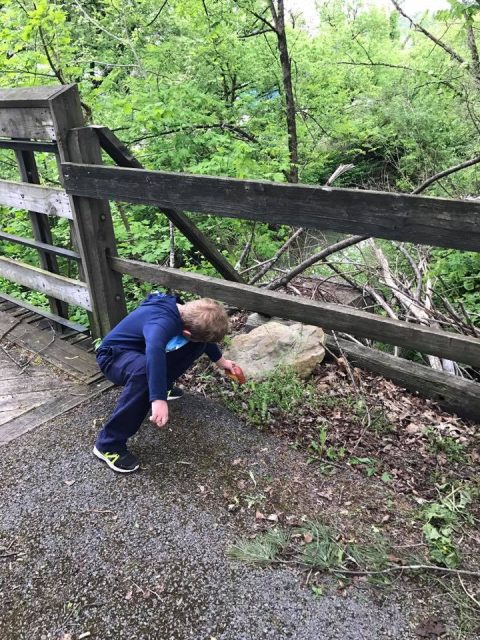2 Ways Walking Makes You Smarter & More Creative
May 16, 2017
Walking is kind of like that proverbial apple: A walk a day keeps the doctor away. From helping you lose weight and de-stress to lowering your blood pressure and reducing your risk of many chronic diseases—going for regular walks is one of the best and easiest things you can do for your health.
But did you know walking can also make you smarter and more creative – at least when you walk in Marion County?
Marion County Parks & Recreation partnered with Chris Mcintire, Director of Marion County Homeland Security who volunteered his time to research and design the trail signs to highlight our rich history and provide a glimpse of how our communities once looked – and how time has forever changed the landscape.
The Marion County Historic Rail-Trail System is composed of three parts – Southern Trail (Enterprise to Everson), Middle Trail (Everson to Fairmont) and Northern Trail (Fairmont to Monongalia County line).
Be sure to look for the historic signs when you walk the rail trail. Below are just a few of the fun facts you will discover about our communities:
- Turkey Knob was settled in 1772 by James Johnson an ensign in the company of Captain William Haymond at Pricketts Fort in 1777. Turkey Knob was named by John Wright in 1901. Land on the east side of the trail to Hutchinson Road was named Morgantown to Weston Turnpike.
- The Western Maryland home was built around 1911 to house the workers maintaining the railway line of the Fairmont Bingamon Railway Company.
- The Western Maryland Bridge was originally built by the Fairmont Bingamon Railway Company in 1916. On January 20, 1950, the Fairmont Bingamon Railway Company merged with the Western Maryland Railway Company. The bridge allowed coal to be hauled from the communities of Wyatt, Perora, Scotts, Jamison, and Nora.
- Hutchinson was part of 400 acres of land given by the governor of the Commonwealth of Virginia in 1781 to Enoch James. The coal camp came into being when a mine was opened by the Hutchinson Coal Company – named after the Hutchinson Family. Homes were originally built below the track between 1890 and 1895. Later community homes were built in 1911 by the Fairmont Coal Company.
- Coke, usually made from coal, is a fuel with few impurities and a high carbon content. It is the solid carbonaceous material derived from the destruction distillation of low-ash, low-sulfur bituminous coal. Coke made from coal is grey, hard and porous. Generally coke ovens found in the region were used to convert the bituminous coal mined in the local mountains into industrial coke, a relatively clean-burning fuel used in the smelting of iron ore.
- The Town of Worthington was incorporated in 1893. In 1950, the town had a population of 544. Today, Worthington’s population is 160.
- The construction of the Fairmont Helen’s Railway started in 1916. The railroad line ran from Chiefton to Idamay – a distance of 3.74 miles. The lines served Consolidation Coal #86 (Carolina) and #87 (Idamay), Bethlehem Steel #44 and #43 and Helen’s Run Coal Vincent Mine.
- Early steam locomotives normally only traveled forwards which meant they used a turntable to move the engines. The Western Maryland Engine House was still standing until the late 1980s.
- In the late 1890s, the community of Chiefton was built on the farm of Casper and Sophona McIntire. Chiefton had a telegraph office, company store, post office, blacksmith shop, stables, schoolhouse and many houses where miners lived.
- Mining camp homes were built on Middleton Hill for miners that worked at Middleton, Anderson and Highland Mines. The coal strike in 1921 forced the families to move leaving Middleton a ghost town. Very little remains of the once thriving town.
Now for the creative benefits to walking.
Go to the beach and what do you see, people of all ages scanning the shore line for shells. While the closest beach is 400 miles away, there is still reason enough to look down while you walk – at least when you walk Marion County’s many miles of trails.
Thanks to Marion County WV Rocks, trail walkers may be surprised when they find one-of-a-kind artwork painted on ordinary rocks. Snap a pic of your rock and post it to the Marion County WV Rocks Facebook page. Then either keep this treasure for yourself or hide it in a different location for another lucky hiker.
Want to join in on the fun? Find rules and tips here.
Have any other history tidbits you want to share? Or have you discovered a masterpiece on the trail? Share in the comments section.




